|
Dear Gillian For me, it is cultivating the method of "seeing through" the veil which obscures the divine (or the "substantive"). Some people can see it just as they are from their default place of standing - but I have needed to create or cultivate this vision - so as to remove the obscuring block. I have got quite far in this quest over the decades - to the point where I can see how other paths work. Indeed, other paths are now useful to me - where once I pushed them away. Now, I can see the "divine" ("void") in the "ordinary" ("form"). The dross of life - that which we accrue in life and leave behind in death - often means it is never easy. But effort is divine, as you already know.
0 Comments
Dear Master Charles Johnson I appreciate books like this - particularly biographies. I am also very grateful that you provided me with your Signed Copy. Chinese history in the West is still a work in progress. The issue has been one of developing a recording method that is universal - or at least accessible by non-Chinese people. This allows Chinese culture to be shared with others. Master Woo's biography is constructed just like books in Hong Kong. As a matter of respect, I do not intend to 'comment' in any great detail. Within traditional Chinese culture, lineage is very important (associated with family surname) and great violence can erupt between different Clans. I have found that a strategic 'silence' allows all parties to retain face. I would say that Chinese people do not change their family names easily and do not take such requirements lightly. Indeed, about 20 years ago, I was told about Master Woo by a Chinese person who said that US Immigration misspelt his name (Chin) upon entry and that is how he became known amongst Westerners - although he was still called 'Chin' within the Hakka Cantonese community. Chin, Chan, Tan and Chen (陳) are all the same name. I suspect there is a 'family only' (inner) lineage as well as numerous 'outer' lineages with respect to San Soo (perhaps emphasising different aspects of the art). The inner lineage is not necessarily better - but implies biological (genetic) relationship between members. Family members are automatically entitled to certain things (by birth) that non-family members are not - or have to earn (usually through arduous methods) - depending upon lineage. Of course, being 'Chinese' - none of this is set in concrete. Interestingly, I was introduced to Master Woo as 'Master Chin' in the Hakka language. Furthermore, as we share the same Clan name - we are gongfu Clan brothers. I placed Master Woo's picture on our family shrine.
Blogger's Note: The Chinese martial arts manual mentioned in the below referenced article is termed the '易筋經' or the 'Yi Jin Jing' (or the 'Change Muscle-Tendon-Energy Channel Classic'). Within myth and legend, this manual is said to have been brought to China from India c. 520 CE by the Indian Buddhist monk known as 'Bodhidharma' (who is believed to have 'transmitted' the 'Dhyana' or 'Ch'an School of Mahayana Buddhism to China). My personal opinion is that the data contained in this manual may have been passed on orally - between Master and Disciple - for centuries BEFORE finally being written down and then evolving into the form known today. If this is not the case, then the Yi Jin Ying is a Qing Dynasty construction reflecting key elements of ancient Chinese martial arts practice - ascribed to mysterious and exotic origination! Perhaps the reality is a bit of both. Whatever the reality, the idea of the (Putonghua) '點穴' (Dian Xue) or 'Strike Point' concept and the '點脈' (Dian Mai) perhaps more readily known in the West by its 'Cantonese' expression of 'Dim Mak' (or 'Strike Channel') are well-known concepts within traditional Chinese martial arts. Within Traditional Chinese Medicine (TCM) - these two terms refer to the same gongfu process of striking the exterior (and 'interior') of the opponent's body in such a manner that the 'Qi' (氣) vital force energy flow is either temporarily or permanently disrupted. This is designed to cause injury along a sliding scale of inflicted damage ranging from a minor (and short-lived) disruption of bodily functions - to devastating damage caused to the internal organs and deep bodily structures - designed to cause 'death' (indeed, it is believed that a true Master can 'strike' a specific medical point even without the opponent knowing - causing death many hours later). It may well be that '精' (Jing) or 'essential nature' and '神' (Shen) or 'expanded empty consciousness' are also 'disrupted' by using this gongfu method - but in different ways. An opponent may be psychologically 'unbalanced' by the presence of his adversary (disrupting 'Shen' with no actual blows being struck) or have the 'Jing' flow disrupted (if opponent is 'male') through a blow delivered to the genitalia or anywhere along the 'Conception' and/or the 'Governing' Vessels, etc. Of course, a powerful blow may be intended to only hit the 'outside' of the physical body structure of the opponent - or be designed to 'penetrate' through these external structures and 'pierce' the inner organs and deep bodily structures. This type of 'hitting' is a routine requirement in the mastery of traditional Chinese martial arts. The concept of '導引' (Dao Yin) or to 'Direct Stretch' - is the traditional foundation for the modern practice known as '氣功' (Qi Gong) or 'Vital Force Energy Cultivation'. ACW (13.4.2023) 2023-04-12 Ecns.cn Editor: Zhao Li (ECNS) -- In Chinese costume dramas, people often see a miraculous martial arts skill called Dian Xue (acupoint), which uses pressure points to control or immobilize an opponent. Dian means to strike with a finger and Xue means an acupuncture point. During fights, martial arts experts use their two fingers to swiftly and forcefully press on a certain part of the opponent's body, immediately immobilizing them. Compared to Dian Xue, the Yi Jin Jing in martial arts novels is even more miraculous. Yi Jin Jing is known as a classic book about Muscle and Tendon Changing. “Yi” means to change, “Jin” means tendons and muscles, and “Jing”, methods. Legend has it that anyone who masters the skills in this book can become a master of martial arts and even save others' lives, so martial artists eagerly pursue it. According to legend, credit for Yi Jin Jing's development is given to Da Mo (Bodhidharma), an Indian monk who lived in the Song Mountains in central China. Legend said that Yi Jin Jing was left behind by Bodhidharma after he departed the Shaolin Temple. However, there is some debate about the true origin. But Zhou Weiliang, professor at Hangzhou Normal University, believes that in reality, Dian Xue and Yijin Jing are not as mysterious as they are portrayed in television dramas. Yi Jin Jing includes the Dao Yin exercises and martial arts exercises. It emphasizes that the core of martial arts lies in internal strength, which is manifested from the inside out. There are no specific martial arts movements in the book. It mainly introduces some exercises to cultivate inner strength. The Dao Yin exercises are related to health preservation via meditation and practicing breathing. In Qing Dynasty (1636 -1911), some stories mentioned the book Yij Jin Jing. Zhou said that many Qing Dynasty notes are similar to novels, and recorded events are more like stories, in which Yi Jin Jing was described as a "secret martial arts manual". Zhou believes that some of the descriptions of Yi Jin Jing in current Chinese martial arts novels may have adopted this setting from historical materials of the Qing Dynasty while adding more rich and complex plot lines. Yi Jin Jing also introduces finger strength training, which involves placing mung beans in a container and repeatedly inserting fingers among the beans to strengthen the hand. Over time, the fingers become as hard as stone and no one can resist them Some people believe that this may be one of the legendary Dian Xue techniques. However, Zhou believes that the ability to immobilize people with this technique may not actually exist. The miraculous effects are mostly exaggerated in novels and movies. English Language Article:
http://www.ecns.cn/m/news/cns-wire/2023-04-12/detail-ihcnkeae0516413.shtml The Tenshin Ryu - Art of War - is an ancient Japanese Style of martial arts created by Tokizawa Yahei during the Kanei period (1624-1645). According to its origination story - this Style emerged from the Style known as 'Shinkage Ryu' as taught by Yagyū Munenori - the Instructor of the Sword to the Tokugawa Shogunate. It is said that Tokizawa Yahei (who served Yagyū Munenori) - created his own School by carefully collecting and organising more than 200 defending and attacking sword-fighting techniques. He named this Style the 'Tenshin Ryu': This style is written in traditional Chinese ideograms (which I can read and share): 天 (tian1) = Over-arching, limitless divine sky 心 (xin1) = mind (brain) and-or anatomical heart 流 (liu2) = flow, river, a 'preserving' and 'spreading' device which links the past to the present, and the present to the future 兵 (bing1) soldier, war, weapon, martial 法 (fa1) law, rule, order, guide, standard, method and 'certain' way I suspect this is influenced (during the latter Ming Dynasty) by of the Chinese Ch'an School of Buddhism and its definition of enlightenment (transmitted to Japan as 'Zen' in its various guises). The mind is 'stilled' during the act of seated meditation - or through the interaction between an enlightened Ch'an Master and the seeking Disciple. Any act, (including a wise word, Sutra reference, a slap, step or well-timed 'ignoring'), is useful for bringing the habitually moving surface mind to a halt. From this point, further training is needed to 'jump off' the hundred-foot pole, as it is called - so that the human perception 'expands' in all (eight) directions without limit. All is correctly perceived without whilst being perfectly reflected within. This young lady moves with her deadly sword within this 'all-embracing' and 'pristine awareness'. I hope that she uses such a beautiful (and deadly) weapon for only doing good for humanity.
There is a belief found in ancient China that as soon as words are made on paper - a corresponding material reality is a) generated, and/or b) reinforced (in the case of pre-existing realities). This sense of 'importance', 'inevitability' and 'mystery' stems from writing (a rare art right up to the 20th century in China) being associated with the ancient divination process. Indeed, the Chinese writing system evolved from the shamans 'interpreting' and 'reading' the cracks made in collected turtle plastron and ox scapulae by the application of a hot poker. This followed a question being subnitted by the 'King' - which was carried-up to the divine-sky by the smoke generated by the hot poker 'touching' the shell or bone - with the (returning) answer being assumed to be contained in the subsequent 'cracks' that appeared! Needless to say, a body of knowledge (and associated 'interpretative' symbols) was eventually established. Up until 1949 only around 10% of the Chinese population was 'literate' (with 90% remaining permanently 'illiterate') - with the 'literacy' rate today being in the high 90% (with 'illiteracy' remaining mostly amongst the very old or the cognitively disabled, etc) - but the cultural attitude toward the importance of 'words' still persists. Therefore, the naming of a martial art within Chinese-influenced cultures is rarely a trivial matter, and I suspect Miyagi Chojun had been thinking about - (and discussing this issue) - far more extensively (and in depth) than the usual 'naming' stories would suggest and imply. When Miyagi Chojun chose the two traditional Chinese ideograms of '剛' (Go - Gang) and '柔' (Ju - Rou) he was achieving two objectives: 1) He was generating order in the material environment by 'confirming' the existential presence of his martial art. The art exists because the name exists - and vice versa. Within ancient China it was believed that by compiling lists of 'things' and 'objects' (including 'names') - a corresponding order was being constructed and reinforced in the material environment. An 'order' that cannot be questioned. 2) Miyagi Chojun was stamping his authority upon the art he had been taught and entrusted with by his teacher Higaonna Kanryo - projecting this order 'backwards' into history - all the way back through time (and associated 'lineage') to the 'root' of the art in Southern China. In other words, Miyagi Chojun was confirming the transmission and his receiving of the transmission - whilst proving he is worthy of it! He is placing his family's clan banner firmly in the ground, making a statement of authority and authenticity, and daring anyone to challenge him - which, of course - no one was stupid enough to do! In this case, the martial art defined as 'Go' and 'Ju' had previously existed (in one form or another) - but now had reached a level of technical sophistication (and stabilization) so that the profound physical-psychological principles of 'Go' and 'Ju' (containing the corresponding meanings you ascribe) could now be considered fully established and developed!
This Senior Citizen silenced the crowd when she raised her leg above her head! Silence turned into awe when she assumed a perfect ‘Golden Rooster Stands on Guard’ (金鸡独立 - Jin Ji Du Li)! Awe turned into spontaneous applause when she assumed a graceful ‘Single Side Horse’ (一字马 - Yi Zi Ma) Splits! This demonstration of Taijiquan was performed by the 77-year-old Jiang Xuezhen (蒋雪珍) in a park near the ‘White Horse River’ (白马河 - Bai Ma He) - the venue for the 2021 ‘Dragon Boat Race’ held in Fuzhou (Fujian province), Mainland China! This elderly lady was originally an ordinary worker in a garment factory – but is now enjoying her retirement. Not only has she practiced Taijiquan diligently to improve her health and strengthen her weak body - but she also made a name for herself in West Lake Public Park (西湖公园 - Xi Hu Gong Yuan) teaching Taijiquan to the common people! Since her graceful and powerful appearance at the Dragon Boat Festival - Jiang Xuezhen's dazzling martial arts skills have aroused the interest of many citizens! Some citizens cannot help but wonder – if this older lady was a professional gymnast before? Was Jiang Xuezhen involved in a lifetime of athletic training and development? The answer to all these questions is a resounding ‘NO’! In fact, Jiang Xuezhen was an ordinary worker employed in a garment factory before retiring - and she had NEVER received any such specialist education in this area before. The advanced pliability of her body (and its ‘ligaments’) stem from the time of her retiring from working in the garment industry. Jiang Xuezhen had to retire from working in the garment industry at the age of 45-year due to a physical issue (for which she successfully underwent recuperative surgery). Jiang Xuezhen admits that this was a very confusing time for her both emotionally and psychologically! That is until one day, when she was walking to the West Lake Park (taking exercise), this lady encountered a group of people practicing Taijiquan! At that exact moment - EVERY movement of the Yang Style (the Beijing 24-Step Short-Form) she saw resonated with her mind and body - instantly attracting her attention! When Jiang Xuezhen returned home, she immediately made arrangements to purchase a Taijiquan instructional VCD – which she used to learn Taijiquan through watching carefully and copying the exercises! The next step involved Jiang Xuezhen seeking-out Taijiquan instructors who then corrected and adjusted her ‘Form’ whilst discussing explaining the history and purpose of each sequence - making the revitalising movements much more powerful and effective! Although it took a long time of committed and regular practice, the regular performance of the Taijiquan movements and sequences finally start to transform the natural state and condition of her muscles, joint, bones, ligaments and tendons. At the same time her overall health improved as her inner organs began to strengthen. These changes were so profound that her partner also began to regularly practice Taijiquan! Together, they founded the ‘West Lake Park Taijiquan Practice Group’ - which at the time of writing has at least one-hundred members! When giving a recent interview to reporters, Jiang Xuezhen stated: “It is said that with every inch the ligaments stretch – the lifespan is extended by ten years! This is why I stretch my legs every day!” Jiang Xuezhen went on to explain that when she first tried to lift her legs all those years ago – her ligaments were tense there was very little movement with pain! Jiang Xuezhen trained diligently between the ages of 45-60-years old, and then she found that one day ALL the tension in her body completely disappeared and she was able to drop down into the side-splits position – and stand with one leg held-up directly into the air! This is why Jiang Xuezhen is now able to assume the ‘Golden Rooster Stands on Guard’ and ‘Single Side Horse’ Splits with ease! After demonstrating her extraordinary Taijiquan skills, Jiang Xuezhen advises: “Concentrate upon an activity and pursue its perfection with diligence!” This is sound advice, as apart from being able to demonstrate her mastery of Taijiquan – Jiang Xuezhen is also a painter! Jiang Xuezhen explained that she liked to draw since a child - and has always kept one or two drawings of the Four Treasures in the study room at home - after retirement. When she was about 65-years old, Jiang Xuezhen accompanied her partner in the study of flower and bird painting in a university designed to cater to the needs of the elderly. After two years of meticulous flower and bird painting - Jiang Xuezhen turned to landscape painting. The landscape paintings provided by Jiang Xuezhen are truly inspiring – with the background and fore-ground scenery featuring lakes and mountains contrasting perfectly! The art of Jiang Xuezhen generates a unique beauty which is enhanced by an atmosphere which is experienced by the observer as being vast and hazy! Jiang Xuezhen describes herself as a very serious person. When she learns one thing, she spends all her energy on that single activity. In order to learn landscape painting well, she would only go out daily to practice Taijiquan, but rarely for any other reason. She would often spend a week focusing upon a single picture! Then, in order to match the landscape paintings with the beautiful ideograms that comprised the inscriptions, she also spent a year studying different Chinese calligraphy styles such as seal script, official script, and regular script. "If the font is not good-looking, and the inscription is not well-written, it cannot be regarded as a complete and perfect painting." Jiang Xuezhen explained. This is her true character. It has been nearly 30 years since Jiang Xuezhen retired – yet she has retained the eagerness to learn and perfect everything she turns her hand to! Today, in addition to Taijiquan and landscape painting, Jiang Xuezhen can also perform ballroom dancing! As if all these activities are not enough – Jiang Xuezhen also practices Shaolin martial arts! With her extensive knowledge base and engaging personality, Jiang Xuezhen has become something of an inspiration to the surrounding population – a cultural icon for modern China! [Source: Strait Metropolis Daily] Chinese Language Source: 花30年练太极,福州七旬老太一字马惊艳全场
高抬腿过头顶,一个爽快的金鸡独立瞬间赢得现场朋友的喝彩,随即她又在地上来了一个漂亮又利索的一字马,把节目推向了高潮……不久前,在福州白马河公园举行的端午节活动现场,一位老太的表演让不少市民自愧不如。这位老太就是福州77岁的蒋雪珍,原是服装厂工人的她,在退休后寻找到自我,不仅苦练太极拳改善了虚弱的身体,还在西湖公园“打”出了名堂,将太极拳教授给了更多的人。 60余岁练就金鸡独立、一字马动作 自从在端午节活动中的精彩亮相后,蒋雪珍的花式炫技引起了不少市民的兴趣,有的市民不禁疑惑问,这位老太太以前是不是体操运动员?其实,蒋雪珍退休前是一名服装厂的工人,之前也没有从事过这方面的练习,有着柔软的韧带的起因还要从她退休时说起。 45岁时的蒋雪珍因为身体原因动了手术后,便从原来就职的服装厂退休了。而突然的退休让将蒋雪珍手足无措,每日不知道该做些什么,陷入了迷茫。直到有一日,她散步到西湖公园时,看到了不少人在练太极拳,一招一式瞬间吸引了她的注意。抱着锻炼身体的想法,她购买了太极拳教学碟片,通过不断地的模仿练习学会了太极拳,在与太极拳老师的交流切磋中更精进了太极拳的动作。而在长期的锻炼后,蒋雪珍感到身体逐渐舒爽了不少,更是动员她的爱人一起到在西湖公园中练习太极拳。在30年间,不少市民自发向她学习太极拳,为此,她和爱人还成立了一个西湖如春太极辅助站,学员最多的时候达到了近百人。 “都说筋长一寸,寿延十年,每次运动后,我都拉拉腿。”蒋雪珍告诉记者,原先的她腿抬高一点腿都觉得筋绷得崩的紧,但在多年的锻炼中,她不断尝试拉伸韧带,到了60岁左右,才能可以做出金鸡独立、一字马的动作。 “专心做一件事,并要把它这件事做精” 除了一字马、金鸡独立、太极拳外,蒋雪珍还是一个画家。蒋雪珍说,她从小就喜欢画画,退休后在家里也时常备上文房四宝画上一两副。于是在她65岁左右,她的爱人便带她来到了老年大学里学习花鸟画,在两年的工笔花鸟设色学习入门后,蒋雪珍又转入山水画的学习中。在蒋雪珍提供的山水画作品中,湖和山相映衬的秀丽景色,在苍茫朦胧的氛围中有着独特的美感。 蒋雪珍自喻是个较真的人,学习一件事时,便将所以精力花在一件事上,为了学好山水画,她除了每日的太极拳练功外,便少有外出,常常花上一周的时间认真绘一幅画。而后为了给山水画配以好看的题款,她还用了一年的时间去学习了篆书、隶书、楷书等书体。“如果字体不好看,题款写不好就不能算是一幅完整、好看的画。”蒋雪珍说。 正是较真的性格,蒋奶奶在退休后的近30年间,不断地的保持好学的心,并将每件事做到精,如今的她除了太极拳、山水画外,她还会交际舞、少林武术,成了周围人口中“技能点满满”的潮人。 【来源:海峡都市报】 Person Featured: Adrian Chan-Wyles Age: 20-years-old Location: Back Garden - 29 Siddalls Gardens, Tiverton, Devon EX16 6DG Time of Year: Late Summer - August-September Year: c. 1987 Photographer: Cousin visiting from Oxford - with her family. I would often practice Shukokai Karate-Do (and our Chinese gongfu family style) in the back garden of my parental home during the Summer Holidays of the academic year (when I was studying at college in Hereford). Master Chan Tin Sang (1924-1993) had given me the task of surreptitiously practicing various lineages of Japanese Karate-Do and studying the Chinese cultural origins of these martial arts! My cousin caught me performing the various 'Katas' - the 'middle' photograph is 'Yoi' in Japanese Karate-Do - or the 'Ready' and 'Alert' posture and attitude assumed prior to (and after completing) the performance of the various 'Pinan' Katas - and then carried-on watching whilst I performed the Chinese gongfu 'Basic Form One' [小形一 - Xiao Xing Yi] (the 'lower-block' performed in 'Horse Stance' in the third photograph on the right) - and the 'flying front-kick' found in the '3rd Advanced Form' (離拳- Li Quan) from our Longfist style (first photograph on the left)! From 1983-1984 I practiced one-year of Wado Kai (Southern Karate-Do) in Reigate and Redhill, I then trained in the Shukokai Karate-Do Federation (SKF) between 1984-1987, and then Okinawan Goju Ryu Karate-Do (1987-1989) - both in Hereford. I also occasionally trained in the odd Dojo here and there around Devon (usually 'Shotokan') and I trained in Goju Ryu in Finchley (North London) a few times. However, as I matured and my mind and body developed into the inner and outer structures required by our family (Hakka) gongfu style - my experiment with other martial arts ended around 1993 as I started moving out of my youthful days. Eventually, once a style is properly practiced - then the inner (chemical) and outer (physical) body transforms into the 'shape' the style requires so that the correct 'functions' (or 'techniques') are developed. This means that eventually the techniques of other styles cannot be practiced in a deep or fundamental manner as the building blocks are completely different. Of course, this does not mean that nothing can be learned from other styles - but the profound knowledge must be transformed (or 'translated') into the dialectical language of the style that has been regularly practiced. In other words, when traditional martial arts are practiced over long periods of time - the inner and outer mind and body 'change' due to the continuous effort being exerted in a particular direction. When young, however, the energy channels in the body are still malleable and flexible - but this changes with age and experience.
Hakka and Celtic Spiritual Martial Arts Strive for 'Unity' of Mind, Body and Environment!10/14/2021 Technically correct movements – coupled with psychological awareness and conscious expansion. Even if the kicks, punches, blocks, parries, elbow-strikes, knee-strikes, shoulder-barging and precise foot-work of a particular style are precise and exact – the mind-awareness must be ‘non-attached’ and ‘detached’ from the body it inhabits and the environment it - and the body it inhabits, has to traverse and exist within. Being combat effective on one-side – and mentally detached and expansive on the other – is the essence of spiritualised Hakka gongfu. This spiritual reality continuous to exist regardless of what the body is doing – whether sitting in a dark cave – or sat eating at a table! When others are encountered whose minds and bodies are corrupted by greed, hatred and delusion, there is no negative ‘reaction’ but only a continuous sense of boundless loving-kindness, compassion and wisdom which reflects the external and internal world as it really is free of any delusion or misunderstanding. For the mind to remain expansive and reflective (as explained in the Mahayana Buddhist Surangama Sutra), the cultivated control of the body must be attuned to the frequency of rapid physical deployment, movement and positioning, in times of dramatic martial necessity in the outside world! In other words, when greed, hatred and delusion manifest as brutal violence in the minds and bodies of those in the environment – a fully trained Hakka-warrior must respond in a perfect and unhesitating manner that manifests a radical non-greed, non-hatred and non-delusion through the correct application of martial technique. Of course, this type of martial mastery is not unique to the Hakka Chinese community – but is evident throughout the world and within every culture and contemplative tradition. Indeed, wherever men, women and children have been required to defend themselves (such as the ancient Celtic peoples of the UK and Western Europe under Roman attack) – this type of martial mastery has been the inevitable result. Although I am very proud to be Anglo-Chinese and to be British and Chinese – I am also very grateful to have been born with the genetics of the ancient ‘Keltos’ people – as the ancient Greeks referred to us! The Keltos became the ‘Celts’ that put up a tremendous military resistance to Roman imperialism, brutality and exploitation! It is recorded that the Greek explorer – Pytheas of Massalia (350-285 BCE) - visited the British Isles (the land of my birth) around 304 BCE, but most of his contemporaries refused to accept that there were any landmasses ‘West’ of what is now ‘France’ - a place the Greeks had already colonised to the South! What is interesting is that When Julius Ceasar invaded Britain in 55 BCE – the defending Celts were still deploying massed chariots – a fighting method probably a thousand years out of date by then, but suitable for an island people who inhabited an idyllic and isolated landmass 800 miles long, 200 miles wides and teaming with wildlife and cultivated grain crops! I have even read of some Western European Celts still employing the ‘Phalanx’ of massed spears which perhaps they learned from the ancients Greeks at some point in their history a very long time ago! Win, lose or draw, as individuals all we can do is our best by manifesting our highest spiritual, psychological and physical achievements when the time is right! Our bravery now – will inspire future generations to do the same...
The point is to bring an end to all greed, hatred and delusion in the mind, body and environment. Although this a distinctly ‘Buddhist’ solution to the ills of life – generally speaking, it is also the solution of most ‘secular’ models of reality! An individual can choose their path and express their development in any way they wish or see fit – but in the end a definite ‘purification’ process is experienced which changes the inner and outer being forever! Inner peace is expressed through a deadly martial technique that is NEVER personal but always ‘indifferent’ and in a state of continuous ‘healing’ of humanity, the world and everything in it! Although wild animals can be extremely dangerous in their natural habitats – nevertheless it is important not to produce thoughts of ‘anger’ or ‘violence’ when taking suitable action to ‘avoid’ the danger. This is using wisdom. Sometimes, even wild animals can be seen responding to ‘kindness’ in a manner that is considered very unusual! Even domestic pets can be difficult – but this is all the more reason to maintain a sense of inner and outer peace. Human-beings, by way of contrast, are often far more dangerous with their habitual anger and potential violent outbursts! Traditional gongfu training prepares human-beings for the maelstrom of combat in the outer world – whilst maintaining a calm inner terrain that remains ‘unruffled’ regardless of circumstance. Life can be hard, but it can also be beautiful, truthful and full of justice! The point is to always be ready to build upon the foundation of ‘peace’ and make the world a better place for everyone to live! The physical techniques of the martial arts exist to empower an individual to protect their bodies, their community and their nation. The inner path is universal and transcends these narrow categories of potential violence! If combat happens, then the qualified Shifu must fight to prevail and never lose any encounters! However, this ‘victory’ should never be allowed to happen through ‘anger’ as this is ‘low’, ‘corrupt’ and ‘despicable’! As a situation can change in an instant, a martial artist must always be prepared to ‘adjust themselves to circumstance’ and never let a prejudiced view of reality take over the ‘flow’ of combat and conflict resolution. On the other hand, when combat must be successfully engaged within, then the sheer ‘weight’ of the cultivated ‘inner peace’ must quite literally ‘crush’ the violence that exists in the mind and body of the opponent! Peace must prevail over all.
The mastery of physical technique is an issue of training that should be achieved as soon as possible – even if the process takes a long amount of time in reality. This is irrelevant to the ongoing ‘inner process’ which continues continuously and without end regardless of physical circumstance, (i.e., standing, sitting, lying, walking or sleeping, etc). The mastery of physical fighting is the ‘external’ element of combat training – whilst the ‘inner’ processes far transcend the limitations of human conflict. Individuals can master ‘external’ combat without ever recognising the need or purpose of ‘inner’ training’. Furthermore, it is also possible to participate within ‘inner’ training with no experience in ‘external’ combat. However, within genuine ‘spiritual’ Chinese martial arts – the student has to traverse the terrain of ‘external’ combat BEFORE being allowed access to the path of genuine ‘inner’ training. Many who develop a skill at ‘external’ fighting with no inner training, usually exhibit an increasing and strengthening of the egotistical mind-set and the tendencies to be one-dimensionally ‘selfish’, ‘aggressive’ and highly ‘ignorant’ in manifestation. As such a person becomes ‘older’ - their physical skills diminish and finally disappear – leaving them as a bitter person with no martial ability. In fact, getting older is an important aspect of ‘inner’ training, as there are processes of internal mastery that are entirely reliant upon a profound transformation of the body chemistry and frequency of psychological patterning. Inner mastery can happen in a relatively younger person, but only within special circumstances, and only then if such a person retains a humble and accommodating attitude toward the further process of ‘maturing’ and ‘deepening’ of understanding as one’s age increases. Without this inner mastery – and older fighter will always be beaten by a younger fighter – but with inner mastery, the younger (less experienced) fighter will always be defeated. Spiritual mastery defeats an opponent on the spiritual, emotional, psychological and physical level – and it does so BEFORE any movement is even made. Without spiritual mastery – two fighters physically ‘clash’ and entangle their arms and legs in a chaotic manner with the ‘winner’ being that who prevails through an arbitrary set of rules. Onces the movement of the arms and legs are mastered; the emphasis forever moves inward and away from the physical body. This is a preparation for the (natural) dying process experienced at the end of life. This is how the martial arts is a vehicle for ‘life’ and ‘death’ which has nothing to do with the rather banal activity of physical combat.
|
AuthorShifu Adrian Chan-Wyles (b. 1967) - Lineage (Generational) Inheritor of the Ch'an Dao Hakka Gongfu System. |

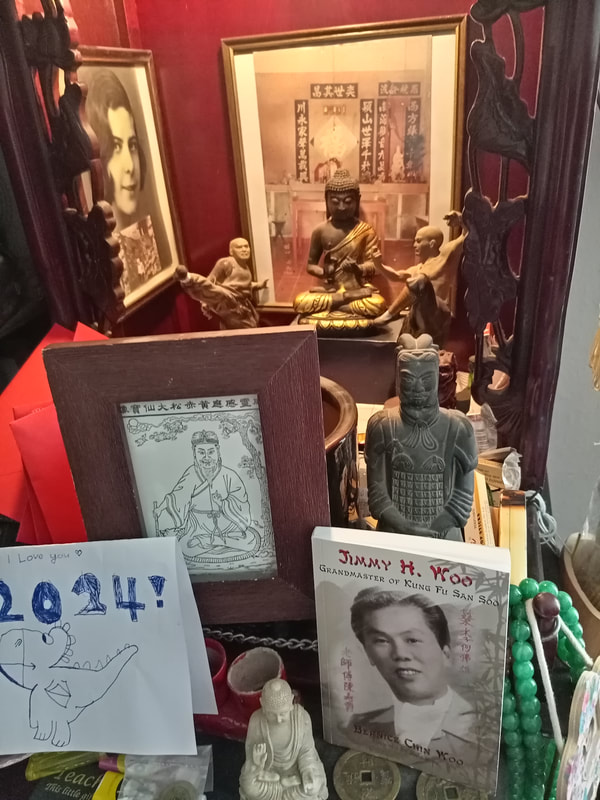





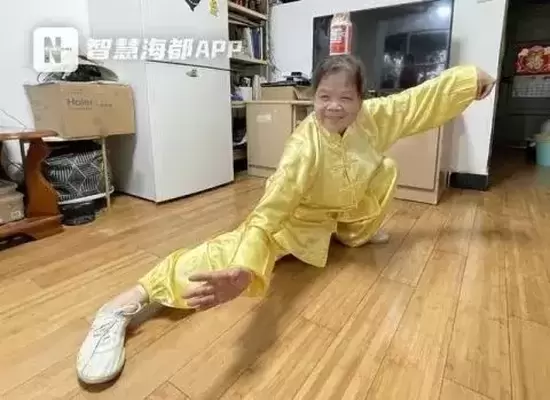

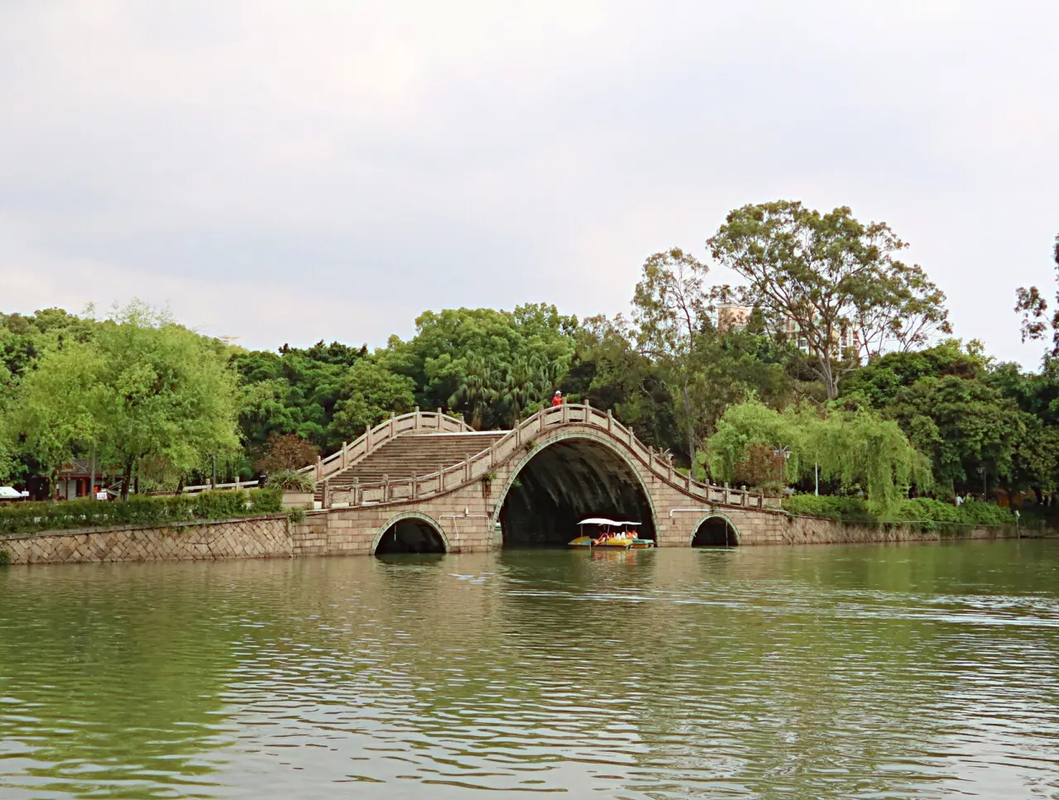

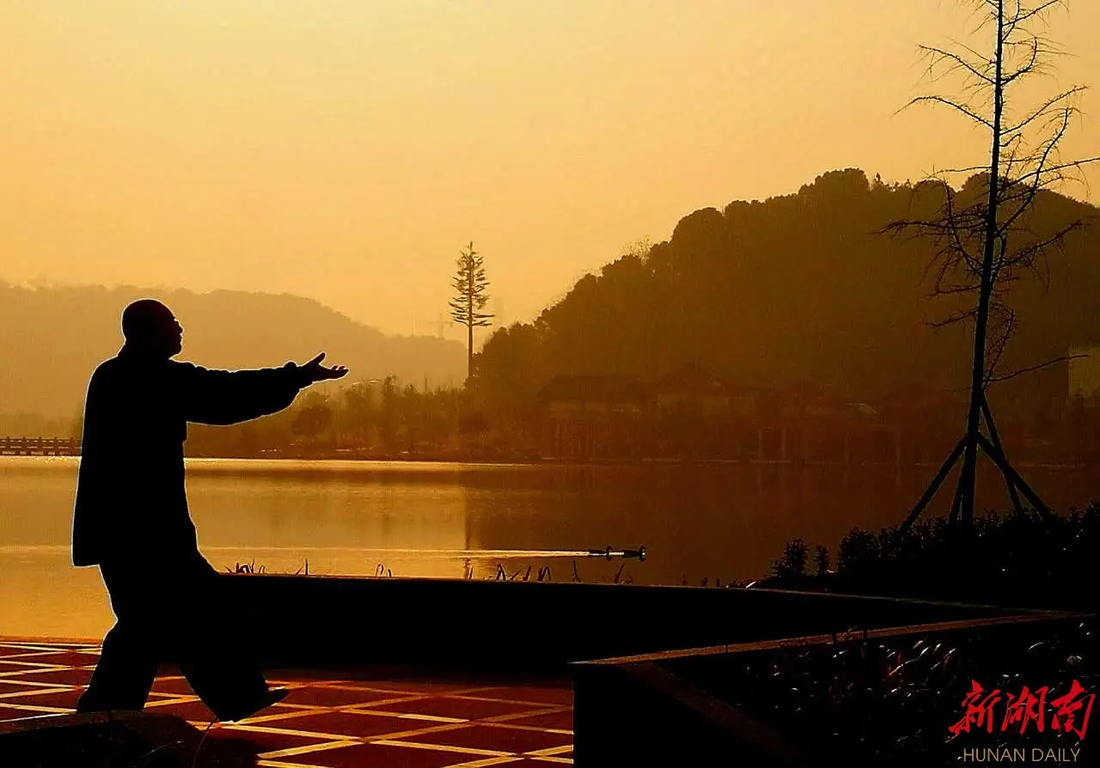

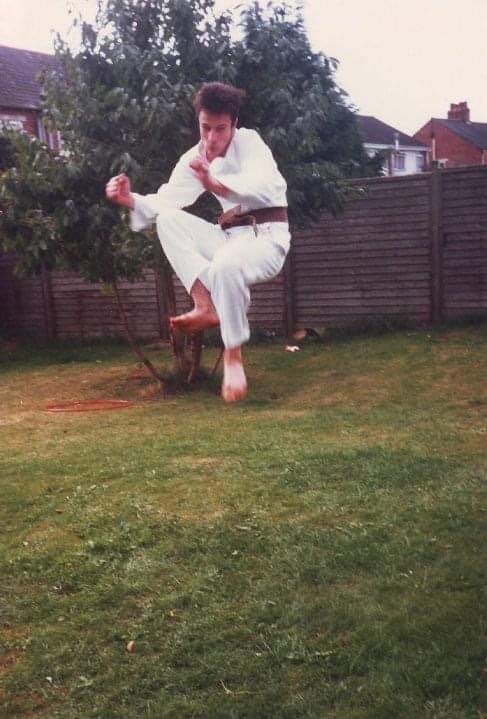
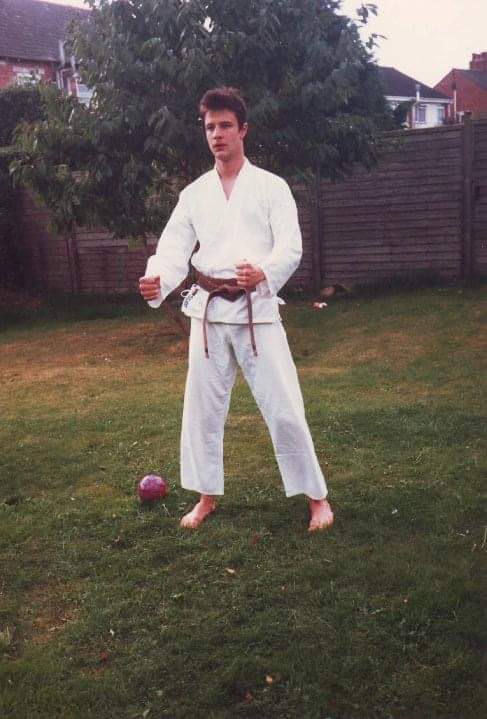


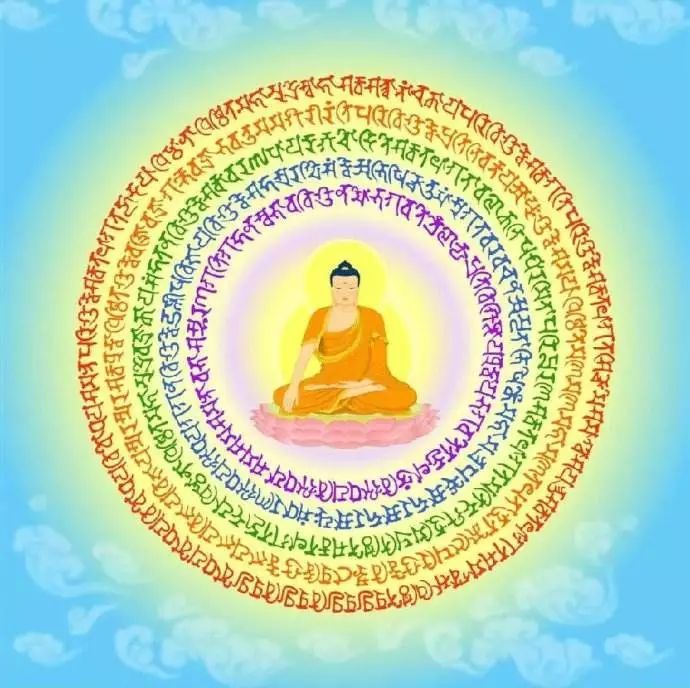
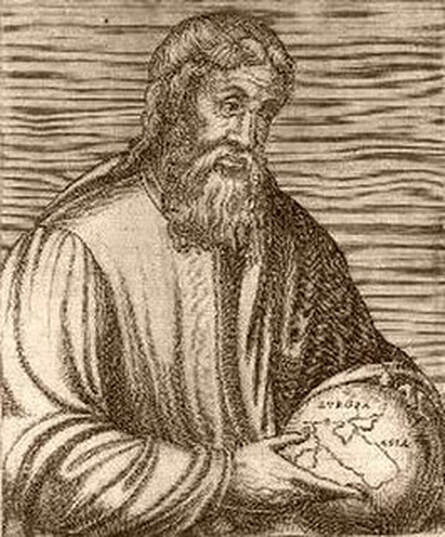












 RSS Feed
RSS Feed